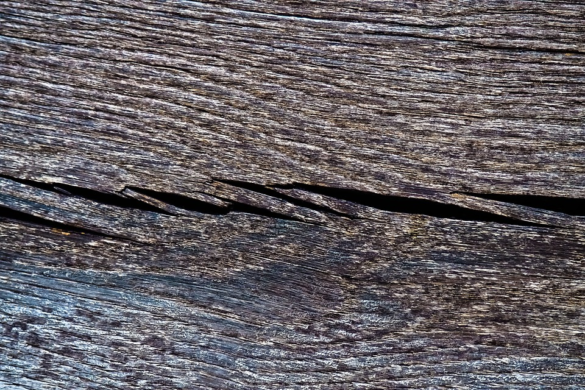
Is there a tree or shrub in your yard that just doesn’t look right in the location where it’s at?
You have the option of digging it up out of the ground and moving it if you want. But before you do, you should learn how to transplant a tree or shrub the right way with Supreme Tree Experts.
Unfortunately, there’s no guaranteeing that the tree or shrub will survive the short trip from one part of your yard to another. As soon as the roots of a tree or shrub are exposed to air, there is a chance things could take a turn for the worst.
But as long as you figure out the best way to transplant a tree or shrub ahead of time, you can improve the odds of it surviving the trip. Here are the steps you should take when transplanting a tree or shrub.
Pick the Right Time to Transplant a Tree or Shrub
The first thing you should do when you’re trying to figure out how to transplant a tree or shrub is to learn about the best times to do it.
Generally speaking, you do not want to try to transplant a tree or shrub in the summer or winter. In the summer, the heat will put too much stress on your tree or shrub and make it hard to transplant it. In the winter, you’ll have a tough time digging into the frozen ground.
Tree removal services will tell you that spring or fall are the two best times to transplant trees and shrubs. The weather isn’t too hot or too cold, which makes the conditions just right for the trees or shrubs that are being transplanted.
Choose a date during the spring or fall for transplanting your tree or shrub. Make sure you’re able to set aside a whole day to get the job done.
Gather the Tools You’ll Need to Complete the Job
You don’t need to have too many tools on hand to transplant a tree or shrub. But you will need a few select tools to complete the job.
Prior to kickstarting your project, you should make sure that you have easy access to:
- A garden shovel
- A tape measure
- A tarp
- A garden hose
You should also stock up on some mulch that you’ll use towards the end of the project to start taking good care of your transplanted tree or shrub.
Outside of these items, the only other things you might need are gardening gloves and a partner who can help you do some of the heavy lifting associated with transplanting a tree or shrub.
Choose the New Location for Your Tree or Shrub
Where are you going to put your tree or shrub once you get it out of the ground? This is something you should determine before you begin digging up a tree or shrub since you don’t want to expose it to the air for too long.
You should find out whether your tree or shrub requires sun, shade, or some combination of the two. You should also find out how much water your tree or shrub needs on a regular basis.
Based on these things, you’ll be able to pick out the ideal location for your tree or shrub. Just be careful about which other trees and shrubs you position it near. You could put a tree or shrub in a precarious position if you plant it next to trees and shrubs that don’t need the same amount of sunlight and water as it does.
Try to Figure Out the Size of a Tree or Shrub’s Root Ball
After you know where you’re going to plant your tree or shrub once you get it out of the ground, it’ll almost be time to start digging your new hole. But before you do that, try to gauge how big your tree or shrub’s root ball is.
More often than not, the root ball for a tree is right around 11 times the diameter of its trunk. But this can vary from tree to tree and shrub to shrub.
Your best bet might be to dig around your tree or shrub a little bit to see if you can estimate how big its root ball is. The hole that you dig for your tree or shrub is going to need to be about twice the size of its root ball, so taking your best guess as to how large the root ball might be is important.
Dig a New Hole for Your Tree or Shrub
At this point, it’ll finally be time to start preparing a new hole for your tree or shrub. This is when you’ll need to roll up your sleeves and get to work!
As we just mentioned, your new hole should be about twice as wide as the estimated size of your root ball. You also want it to be just deep enough so that you’re able to cover the root ball up with soil once you get your tree or shrub into the ground.
Avoid breaking up the soil that is found at the bottom of the hole that you dig. While you might be under the impression that this will allow your tree or shrub to settle in, it could lead to your tree or shrub sinking more than it should and rotting over time.
Start Digging Your Tree or Shrub Out of Its Existing Location
Once you have your new hole all ready to go for your tree or shrub, you can begin to dig your tree or shrub out of its current location. It’s very important to do whatever you can to keep the tree or shrub’s root ball intact while you’re digging it up.
Start digging about three feet from where the bottom of your tree or shrub is so that you can get a sense for where the root ball is located. Your goal should be to dig around and then under the root ball so that you can relocate as much of it as possible.
There are some instances in which an older tree or shrub will have too many roots for you to take when you’re transplanting it. In this case, you can cut some of the roots away as long as you don’t do too much damage to the central portion of the root ball.
Place Your Tree or Shrub Onto a Tarp to Move It
As long as you’ve followed all the steps listed so far, you should be ready to pick up your tree or shrub at this point and move it. But the only problem is going to be that your tree or shrub will be very heavy.
This is where it helps to have a strong partner who can help you lift the tree or shrub up out of the ground. Carefully lift the tree or shrub and its root ball out of the hole that you dug around and under it.
If you’re only moving the tree or shrub a few feet, you might be able to get away with lifting it the whole way and placing it into its new hole. But if you’re moving the tree or shrub all the way across your yard, you should place it on a tarp and use the tarp to slide it to its new home.
Put Your Tree or Shrub Into Its New Location
After your tree or shrub arrives at its new location, the key will be to get it into the ground and cover it up as fast as you can. You don’t want to expose a tree or shrub’s root ball to the elements for any longer than you have to.
Place the tree or shrub into the hole you dug earlier and adjust it so that it’s standing upright. The tree or shrub should stand as high as it did when it was in its former location.
Once you have it in place, start to fill your new hole back up with soil. Push the soil down and use your garden hose to water it so that there aren’t any air pockets left behind when you’re planting your tree or shrub.
You should have a little bit of extra soil at the end when you’re finished planting your tree or shrub. Use it to create a ring around the base of your tree or shrub that can catch water for it. This will ensure it gets all the water it needs in the coming weeks and months.
Take Good Care of Your Tree or Shrub for the First Year
You did it! You learned how to transplant a tree or shrub and relocated it within your yard.
But your work isn’t over yet. Far from it actually.
Once you’ve transplanted a tree or shrub, you’ll need to take good care of it for up to a year to prevent problems. It’s going to take some time for it to settle into its new location.
Begin this process by spreading mulch around your tree or shrub without covering the base of it since that could invite pests to the premises. Then, water it, water it, and—you guessed it!—water it some more.
If you’re transplanting a tree or shrub in the spring, in particular, it’s essential to keep it watered all summer long. Otherwise, the heat could take a toll on it and cause issues to pop up.
Know How to Transplant a Tree or Shrub Before You Begin Doing It
Transplanting a tree or shrub from one spot in your yard to another spot might seem like a daunting task to those who haven’t done it before. But as you’ve seen here, it can be done within just a few hours when you know what you’re doing.
Now that you know how to transplant a tree or shrub, give it a try for yourself. Move a tree or shrub that you’ve been thinking about moving for years now and put it in a better spot. You’ll be glad you did once the job is done.
Take a look at some of the other home improvement projects you can tackle by reading the other articles on our blog.









